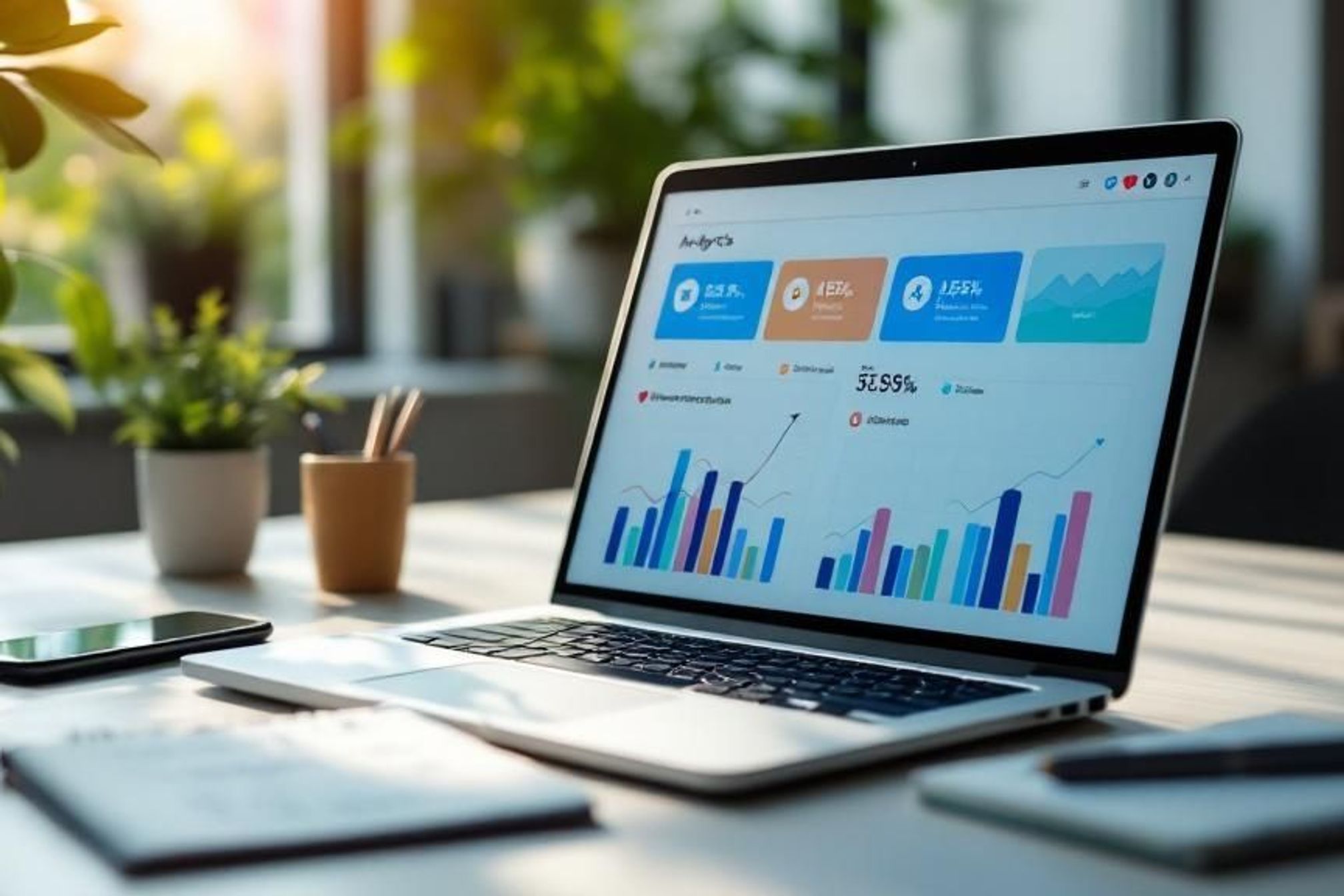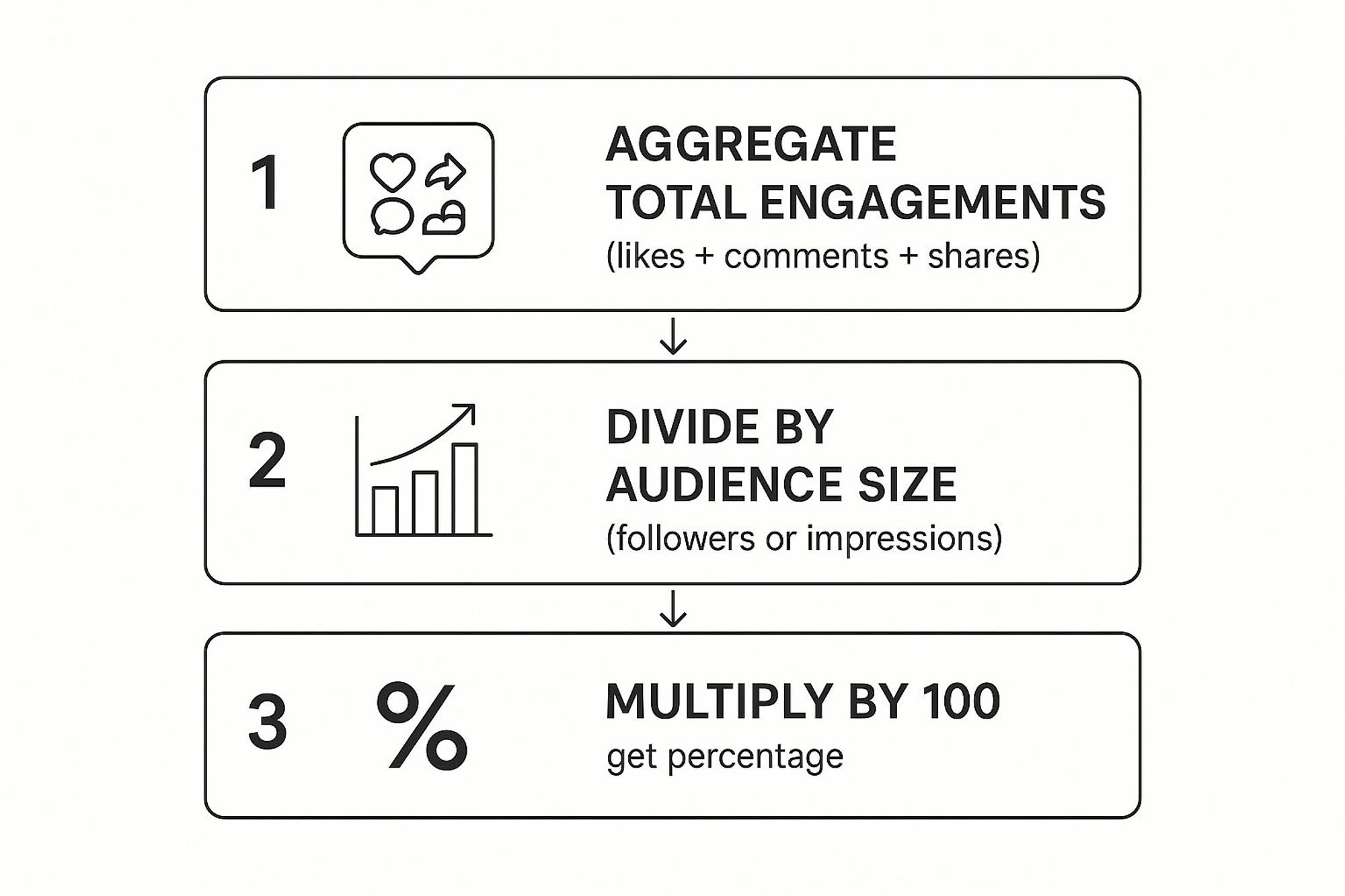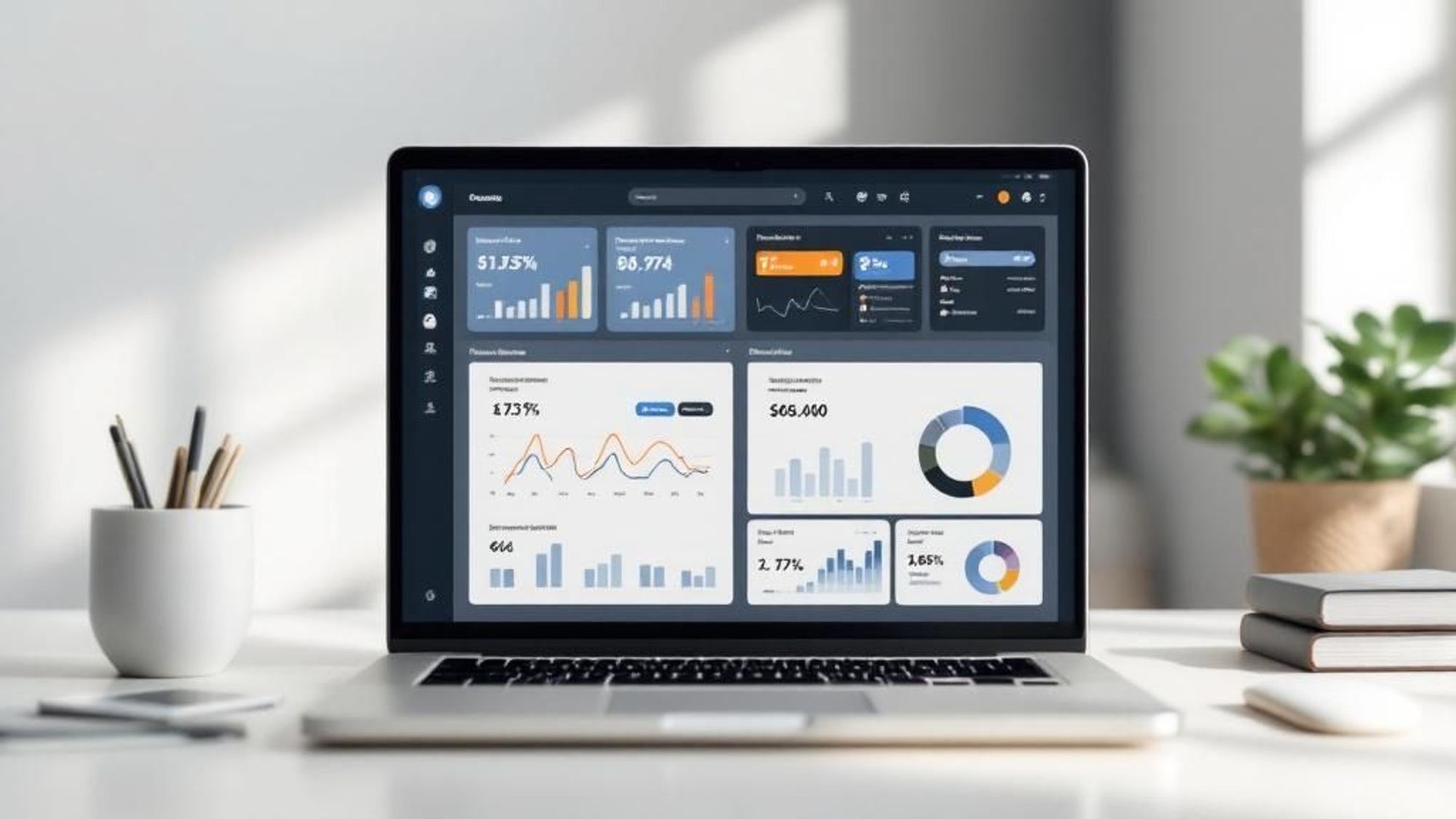Wednesday, July 16, 2025
How to Measure Social Media Engagement Effectively


Measuring social media engagement is about a lot more than just tracking vanity metrics. It’s about turning all those interactions—the likes, comments, and shares—into a feedback loop that helps you make smarter marketing decisions.
You’re essentially translating passive data into an active strategy.
Moving Beyond Likes: What Engagement Really Means
Let's be honest, just counting likes isn't a strategy. It's just counting. Real engagement is about the quality of the conversation your brand is having with its audience. It tells you whether your content is actually hitting the mark or just fading into the noise.
The key is shifting your mindset. You need to move away from simple vanity metrics and start analyzing interactions that signal a genuine connection. These interactions are the heartbeat of your community, telling you how your audience feels and what they truly care about.
What to Actually Track
Instead of fixating on the raw like count, it’s time to focus on metrics that tell a story. Here's what I mean:
- Shares and Saves: These are gold. They tell you your content is so valuable that people are either passing it along to their friends or tucking it away for later. That’s a huge vote of confidence.
- Comment Quality: A single, thoughtful comment can be worth more than a hundred fire emojis. Are people asking insightful questions? Are they starting real discussions in your comment section? That's what you're looking for.
- Direct Messages (DMs): When someone takes the time to slide into your DMs, it’s a big deal. They've moved from a public forum to a private chat, which signals high intent and a level of trust you can’t buy.
Measuring these interactions is what separates the pros from the amateurs. With people spending over 14 billion hours on social media every single day, the competition for attention is fierce. You have to know if your content is truly resonating.
The goal is to shift your thinking from, "How many people liked this?" to "What did this post make our audience feel or do?" That’s the core of effective engagement measurement.
Ultimately, this deeper level of analysis is how you figure out how to boost social media engagement in a way that actually supports your business goals. It's how you turn your social channels from a simple broadcasting tool into a powerful asset for building a real community.
Aligning Engagement Metrics with Business Goals
It’s easy to get lost in a sea of social media numbers. But the most powerful metrics are always the ones tied directly to what you’re trying to accomplish as a business.
Before you even ask, "What are our numbers?", the real question should be, "What are we trying to achieve?" A dashboard packed with every metric under the sun creates confusion, not clarity. Your business goals are the only compass you need to navigate the data.

Different Goals Mean Different Metrics
Let’s get practical. A one-size-fits-all approach to social media analytics is a dead end because every business needs something different from its presence.
Think about two completely different brands. A B2B tech company using LinkedIn is probably focused on one thing: lead generation. For them, a "like" is nice, but what really moves the needle are metrics like:
- Click-through rates (CTR) on posts that link to their latest whitepaper or webinar sign-up.
- Conversion rates on landing pages fed by their social traffic.
- Qualified leads coming in from direct messages or form fills.
Now, flip the script to a direct-to-consumer (D2C) beauty brand on Instagram. Their world revolves around community building and brand loyalty. The metrics they obsess over will look totally different:
- Saves on a makeup tutorial, which shows people find it useful enough to come back to.
- User-generated content (UGC) where customers are tagging the brand in their own photos, creating authentic social proof.
- Comments and DMs that spark real conversations and build lasting relationships with their followers.
This kind of platform-specific thinking is crucial. Sure, Facebook still reigns supreme with over 3 billion monthly active users as of October 2024, but user behavior is wildly different everywhere you go. On YouTube, it's all about watch time. On Instagram, it might be about how many people use your interactive Story sticker.
With 256 million new people joining social media every year, these engagement patterns are always in flux. You have to know where your audience is and what they do there.
The real intelligence comes from connecting social activity to tangible business outcomes. This ensures you're not just collecting data but gathering insights that inform your entire marketing strategy.
When you align your metrics with your goals, you stop chasing vanity numbers and start making smart decisions. It also gives you a clear, defensible story to tell when you need to calculate your social media ROI and prove its impact on the bottom line.
Your Toolkit for Tracking Engagement
Picking the right tools to measure your social media engagement can feel like a huge task, but it really doesn't have to be. Your perfect toolkit comes down to a few simple things: your budget, your team's size, and what you’re actually trying to accomplish. You don't need the most expensive software out there to get solid insights; you just need the right tool for where you are right now.
The best place to start? Native platform analytics. These are the free, built-in tools that come with every social network, like Instagram Insights or the Facebook Business Suite. If you’re a solo creator or a small business just starting out, these are fantastic for tracking the foundational engagement metrics without spending a dime.

Where to Find Your Data
For instance, you can easily spot your most engaging posts right inside Instagram Insights. Just head to your Professional Dashboard and check out "Content You Shared." From there, you can filter by key metrics like Reach, Likes, Comments, and Saves to quickly see what’s hitting the mark with your audience. It's a powerful, no-cost way to get your first real read on performance.
Of course, as your brand grows, trying to manage a half-dozen native dashboards gets old fast. This is where all-in-one management platforms like Schedul become a lifesaver. They pull all the data from your different channels into one clean report, so you can ditch the tedious copy-and-paste routine. It’s a game-changer for efficiency and gives you a clear, big-picture view of how you're doing across the board.
The goal isn’t to track every metric under the sun. It’s about picking a tool that gives you the specific data you need to make smarter, more confident decisions. Start simple and layer in more advanced tools as your strategy gets more sophisticated.
For larger brands or those who want to dig even deeper, advanced social listening tools are the next logical step. These platforms look beyond your own profiles. They analyze broader industry conversations, keep an eye on what your competitors are up to, and measure the overall sentiment around your brand. It's how you find out not just what people are saying, but how they actually feel.
As you build out your toolkit, it’s helpful to see how these metrics work in the real world. For example, understanding the key community engagement metrics for Telegram can put your own data into a clearer context. And for a full rundown of the essentials, be sure to check out our complete guide on the core social media engagement metrics you should be tracking from day one.
Turning Raw Data into Actionable Insights
Collecting a ton of data is one thing. Actually knowing what to do with it is what separates the brands that thrive from those that just... post. This is where you graduate from just staring at numbers and start turning them into real, strategic decisions.
Let's get practical. The first and most fundamental metric you need to master is your engagement rate. This single percentage is a vital health check for your account, telling you how many people are actually interacting with your content versus just scrolling past it. It's the clearest signal you have to know if you're resonating or just shouting into the void.
This simple breakdown shows you exactly how to figure it out.

This formula isn't just a random calculation; it gives you a consistent way to measure performance across different posts and even different platforms. It turns fuzzy "interactions" into a concrete number you can track.
Diagnosing Your Content Performance
Once you have your engagement rate, you can start asking much smarter questions. Think of yourself as a content detective, piecing together clues from the data.
For example, what if your Instagram Story views are consistently through the roof, but you get almost zero replies? That's a huge clue. It suggests your content is visually grabbing, but it's not actually starting a conversation.
Let's look at a real-world scenario:
- The Problem: High views, but crickets on the interaction front.
- The Diagnosis: Your content is probably too passive. Are you giving people an easy way to engage? Think interactive elements like polls, quizzes, or question stickers.
- The Action: In your next few Stories, try adding a crystal-clear call-to-action. Ask a direct question or drop in a poll sticker that makes it effortless for someone to reply. Then, watch what happens to your reply rate.
By isolating one variable at a time and testing new approaches, you're no longer just guessing. You're making confident, data-backed tweaks to your content strategy.
Replicating Your Successes
This same diagnostic mindset is crucial for your wins, too. Did one of your posts get way more shares than usual? Don't just pop the champagne—dissect it.
What was so different about that specific post?
- Was it the format? Maybe a carousel post finally outperformed your usual single images.
- Was it the topic? Did you hit on an emotional trigger or a pain point?
- Was the caption written in a different tone of voice?
Identifying what makes your best posts work is how you build a repeatable formula for success. You can then bake those winning elements into your upcoming content plan. This is where having a library of solid social media content calendar ideas becomes a massive advantage, letting you strategically plan more of what you already know works.
The social media world is always in motion. With a projected 5.42 billion global users by 2025—each juggling nearly seven different platforms—you have to think bigger than just one network. And as trends shift, so do the metrics. Today, with 78% of users preferring to learn about products via short-form video, metrics like video completion rate are becoming just as important as likes and comments.
How to Report Engagement and Prove ROI
So, you've done the hard work of building engagement. The final piece of the puzzle? Proving its worth to the people who sign the checks. Let's be honest, stakeholders might not get excited about "shares" and "saves," but they definitely understand business value. Your data is only as good as the story you tell with it.
It's all about reframing the conversation. Instead of just saying a post got 500 comments, you need to connect that to something tangible. Try this: "We sparked 500 direct customer conversations with our latest post, which gave us three critical insights we’re sharing with the product team." See the difference? You’ve just turned a vanity metric into a source of valuable business intelligence.

From Metrics to Narrative
To build a report that actually gets read, you have to draw a clear line from your social media KPIs to the company's bigger goals. Don't just dump a list of numbers on a slide; give them context and explain what they mean for the business.
Here’s how you can translate your wins:
- For Brand Awareness: Instead of, "We gained 1,000 followers," say, "Our audience grew by 8% this quarter, which means we’ve successfully expanded our reach into a new key demographic."
- For Lead Generation: Ditch "Our link clicks went up," and go with, "We drove 250 qualified leads to our webinar landing page, which has already resulted in 15 scheduled sales demos."
This simple shift in how you present your results does more than just justify your budget—it builds trust. When stakeholders can clearly see how your social media activity impacts the bottom line, they're far more likely to get behind your program and support its growth.
The best reports don't just show what happened; they explain why it matters to the business. Translating your engagement wins into the language of ROI is a skill that separates the good social media managers from the great ones.
Ultimately, your report is a testament to your strategy's impact. If you're looking for more ways to generate those valuable interactions in the first place, check out these proven community engagement strategies to help you get more meaningful results worth reporting.
Common Questions About Measuring Engagement
Even with the best tools and a clear strategy, a few questions always seem to pop up when you get into the weeds of measuring social media engagement. It's totally normal. Let's walk through some of the most common hurdles people face so you can fine-tune your process.
What Is a Good Engagement Rate?
This is the million-dollar question, and the honest answer is: it depends. There’s no magic number that works for every brand on every platform. A "good" engagement rate is a moving target, influenced by your industry, platform, and even how big your audience is.
Instead of chasing a universal benchmark, the best yardstick is your own progress. A solid rate is one that’s consistently getting better. While you’ll often hear marketers throw around 1-3% as a general average, the real win comes from outperforming your past self and keeping an eye on your direct competitors.
The question shouldn't be, "What's a good rate?" but rather, "Is our rate improving?" This simple shift moves your focus from vanity metrics to real, internal progress—which is where growth actually happens.
How Often Should I Track Engagement?
Your tracking frequency really boils down to your goals. Are you trying to manage your day-to-day content or make bigger strategic moves?
For daily content management, a quick check-in every day or so is perfect. It helps you catch trends as they happen, jump on important comments, and get a real-time feel for what's landing with your audience.
But for the bigger picture—the kind of analysis that informs your strategy—you need to zoom out. Looking at your data monthly or quarterly gives you enough information to spot meaningful patterns without getting bogged down by tiny, insignificant daily spikes and dips.
Should I Use Reach or Followers for My Rate?
Both are useful, but they tell you two very different stories about your content. It’s not about choosing one over the other; it’s about knowing when to use each.
- Engagement Rate by Followers: This metric tells you how well your content resonates with your loyal community—the people who’ve already raised their hands to follow you. Use this to check the health and loyalty of your core audience.
- Engagement Rate by Reach: This one measures how engaging your content is to everyone who saw it, including people who don't follow you. This is your go-to for figuring out the viral potential and overall quality of a specific post.
Tired of jumping between a dozen different analytics tabs? Schedul pulls all your essential metrics into a single, clean dashboard, giving you the clarity you need to make smarter, data-driven decisions. Start your free Schedul trial today and turn your engagement data into your most powerful asset.
No credit card required!